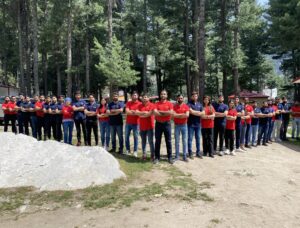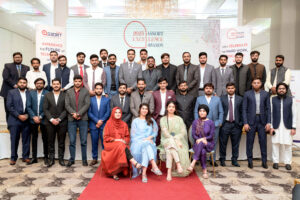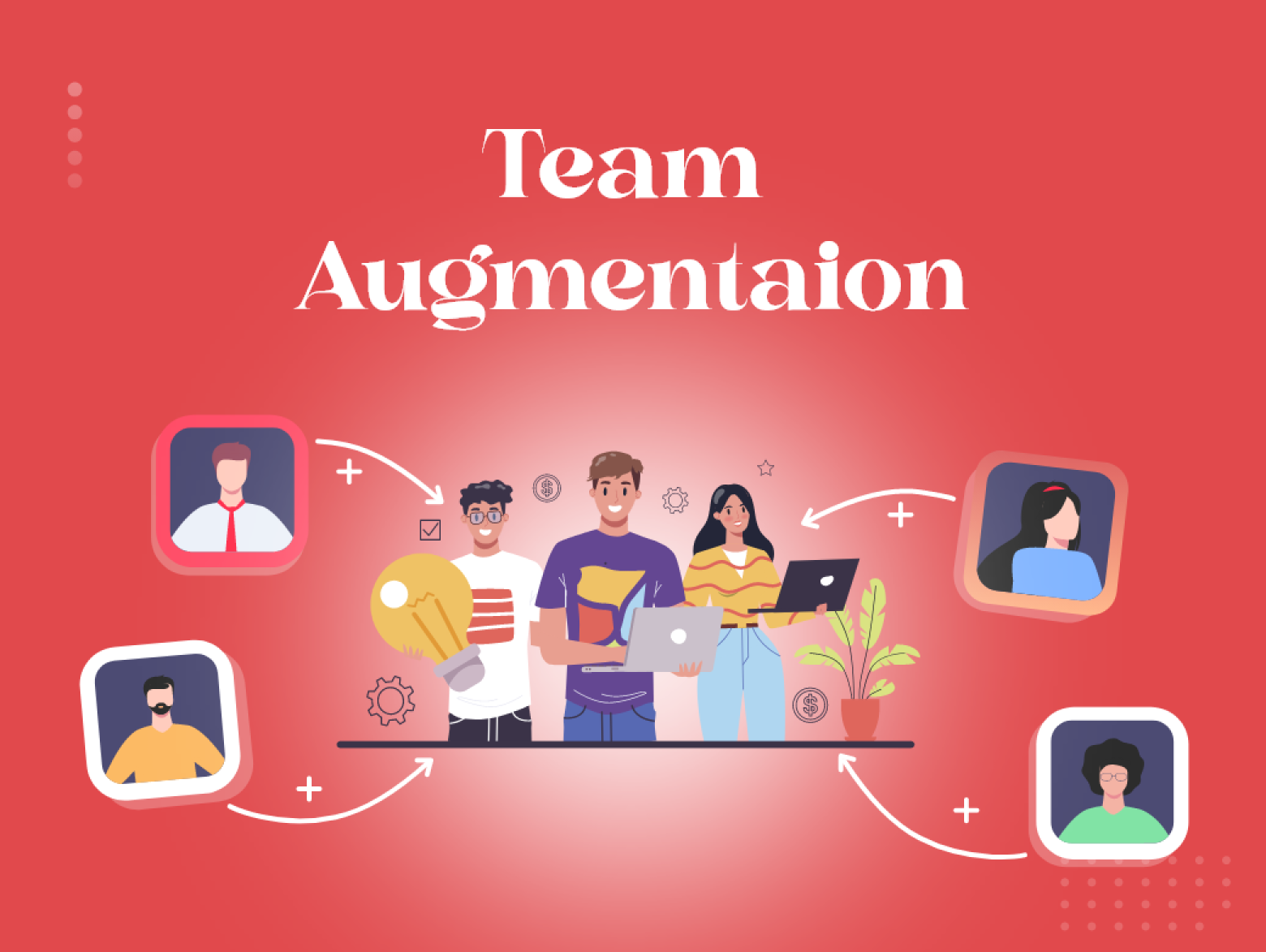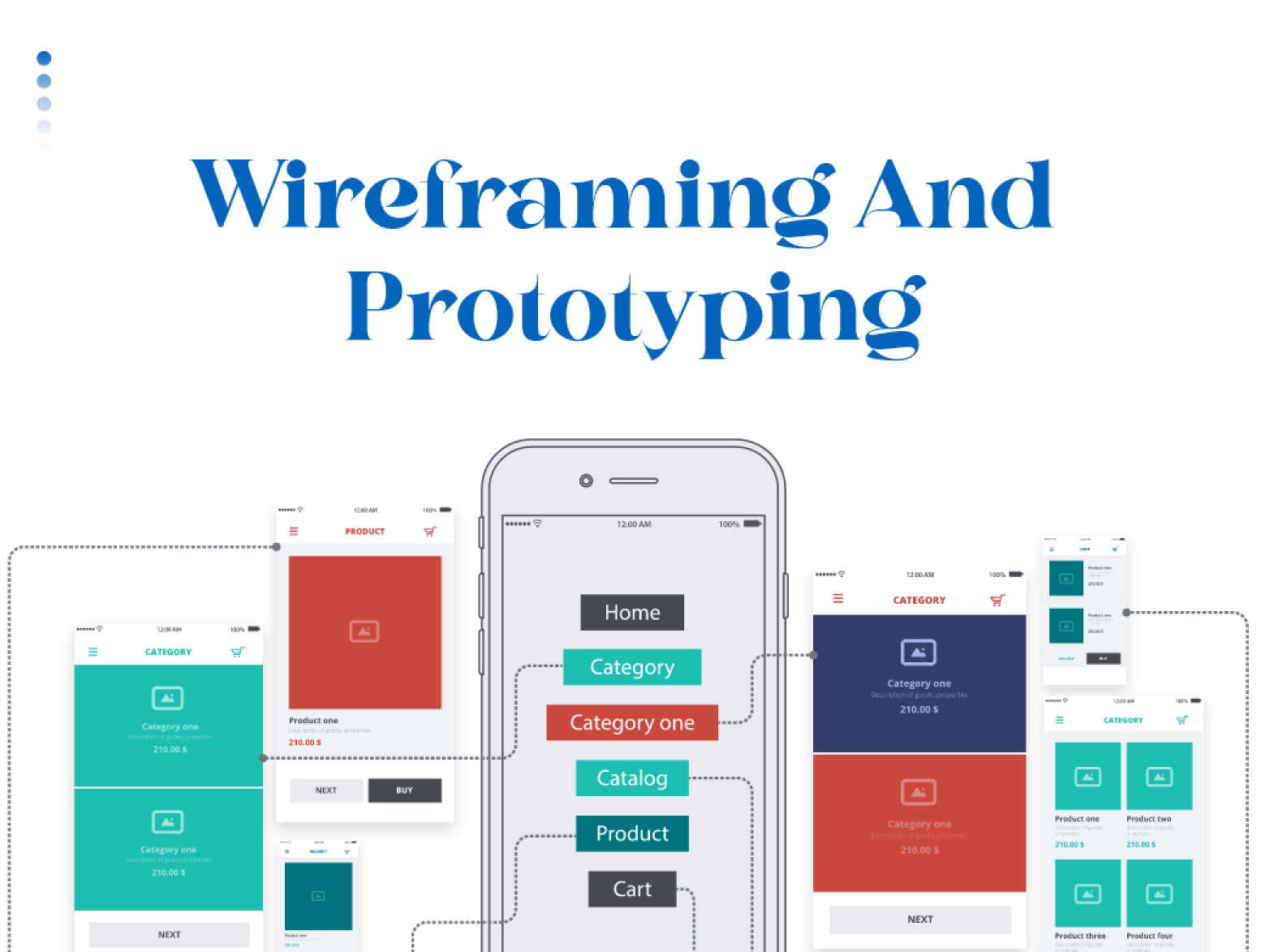What is Staff Augmentation?
Staff augmentation is the utilization of external employees temporarily to meet an organization’s capacity needs. It is an outsourcing strategy where a company hires individuals from another company or elsewhere for a specific period to ensure task completion. Staff augmentation is particularly common in IT companies.
To illustrate staff augmentation, consider an IT firm tasked with developing a shopping app for a client. However, the company only has two designers and two developers, whereas the project requires three designers and four developers. Staff augmentation is the ideal solution to bridge this skill gap and avoid project delays that could harm the company’s reputation. Furthermore, by hiring three additional skilled staff members solely for this project, the company can fulfil its requirements without terminating newly hired developers, thereby avoiding legal complications and the administrative burden of full-time employment.
When to use Staff Augmentation?
Staff augmentation is a widespread practice globally; however, it is essential to carefully evaluate when and under what circumstances a company should utilize it. Here are several scenarios where staff augmentation is an ideal fit for your business.
Increase Capacity:
Staff augmentation can enhance an organization’s capacity by providing additional skilled resources as needed. By augmenting the existing workforce with external employees, the organization can handle a higher workload, meet project deadlines more effectively, and take on new projects without overburdening its permanent staff.
Project Scalability:
When the company anticipates a temporary increase in project workload or requires additional specialized skills for a specific project, staff augmentation allows them to quickly augment their team and meet project demands without committing to long-term hires.
Skill Gaps:
If the company lacks particular expertise or specific technical skills needed for a project, staff augmentation enables them to fill those gaps by bringing in external professionals with the required expertise.
Time-Sensitive Projects:
When the company faces tight deadlines or time-sensitive projects, staff augmentation can help accelerate project completion by quickly onboarding additional resources who can contribute to the project immediately.
Cost-Effectiveness:
Rather than investing in hiring and training full-time employees for short-term projects, staff augmentation offers a cost-effective solution. The company can access skilled professionals without incurring the long-term expenses of full-time employment.
Flexibility and Adaptability:
Staff augmentation provides flexibility to adjust the team size based on project requirements. It allows the company to scale up or down as needed, responding efficiently to changing market conditions and project scopes.
Types of Staff Augmentation?
Project-Based Staff Augmentation:
The resources are hired specifically for a particular project or a defined period. The augmentation is focused on fulfilling the staffing needs and skill requirements of that specific project. The hired resources work exclusively on the project until its completion, and their engagement concludes once the project is finished.
Team-Based Staff Augmentation:
This involves augmenting an existing team within the organization. Resources are added to an established team to enhance its capabilities, expand its skill set, or increase its capacity. The augmented team works together on multiple projects or ongoing operations, leveraging their collective expertise to achieve organizational goals.
Commodity-Based Staff Augmentation:
Commodity-based staff augmentation involves hiring resources for roles requiring basic or standard skills, often called “commodity” skills. These skills are widely available and easily attainable.
Skilled-Based Staff Augmentation:
This focuses on hiring resources with specific skills and expertise that are more specialized than commodity skills. These skills typically require some level of training, certification, or experience.
Highly Skilled-Based Staff Augmentation involves hiring resources with exceptional expertise and advanced skill sets in specialized domains. These individuals possess in-demand and hard-to-find skills critical for complex projects or tasks requiring advanced technical knowledge.
Offshore Staff Augmentation involves hiring resources from a different country or geographic location. This type of augmentation is often chosen to take advantage of cost savings, access to specific expertise, or to overcome local talent shortages.
Remote Staff Augmentation:
Remote staff augmentation allows companies to hire remote resources, regardless of location. This approach provides flexibility in accessing talent from various sites. In addition, it may offer cost advantages by avoiding the need for physical office space. Effective communication and collaboration tools are essential to ensure smooth coordination between the remote team and the company.
How to choose the Suitable Staff Augmentation Model?
Choosing the suitable staff augmentation model involves considering various factors aligning with your organization’s needs and goals.
Project Requirements:
Evaluate the detailed requirements of your project. Determine the skills, expertise, and duration of the project to identify the level of specialization and resource needs and then choose the augmentation model.
Resource Availability:
Evaluate the availability of resources in your local market and globally. Suppose specific skills are scarce or in high demand locally. In that case, you may consider offshore or remote-based augmentation models to access a broader talent pool.
Cost Considerations:
Analyze your budget and cost constraints. Offshore or remote staff augmentation models often offer cost advantages due to lower labour costs. In contrast, onshore models may provide better communication and coordination benefits. Consider balancing cost-effectiveness and other factors like quality, time zone differences, and potential language or cultural barriers.
Communication and Collaboration:
Evaluate the importance of communication and collaboration in your projects. If frequent and direct interaction is vital, consider models that provide proximity or time zone alignment. Remote or hybrid models may be suitable for projects where remote collaboration is feasible and effective.
Long-Term Strategy:
Consider your long-term business strategy. Anticipate consistent and ongoing staffing needs. Building long-term relationships with a preferred staff augmentation provider may be beneficial. On the other hand, if your staffing needs fluctuate and are project-specific, a more flexible model that allows for easy scaling up or down could be preferred.
Risk Management:
Assess the risks associated with different models. Consider legal and compliance requirements, data security, intellectual property protection, and potential challenges in managing remote or offshore resources.
 Pros and cons of Staff Augmentation
Pros and cons of Staff Augmentation
Pros
Staff augmentation offers several benefits for organizations, including:
Access to Specialized Skills Globally:
Staff augmentation allows companies to quickly access professionals with specific expertise and specialized skills that may not be available within their existing workforce. This enables organizations to meet project requirements effectively and efficiently without investing in extensive training or long-term hiring.
Scalability and Flexibility:
Staff augmentation provides the flexibility to scale up or down the workforce based on project demands. Companies can quickly add or remove resources as needed, aligning the team size with project requirements and avoiding the costs and challenges of maintaining a fixed-size workforce.
Time-Saving:
Organizations can accelerate project timelines and enhance time-to-market by leveraging staff augmentation. Additional resources can be quickly onboarded to speed up project delivery, meet tight deadlines, and seize business opportunities promptly.
Cost-Effectiveness:
Staff augmentation offers cost advantages compared to traditional hiring models. Companies can avoid the expenses of recruitment, training, employee benefits, and long-term employment commitments. In addition, staff augmentation allows organizations to access skilled professionals temporarily, optimizing costs and improving budget allocation.
Increased Capacity and Workload Management: Staff augmentation enables organizations to handle higher workloads and take on additional projects without overburdening their permanent staff. By augmenting the existing workforce with external resources, organizations can effectively manage increased demand, meet project deadlines, and maintain productivity.
Knowledge Transfer and Learning Opportunities: Augmented resources bring their expertise, experiences, and best practices to the organization. This creates opportunities for knowledge transfer and learning among the internal team members, fostering professional growth and enhancing the overall skill set of the organization.
Mitigation of Skill Gaps and Talent Shortages: Staff augmentation helps bridge skill gaps and overcome talent shortages. Companies can access a broader talent pool, including highly skilled professionals, to fulfil specific project requirements and address areas lacking internal resources.
Reduced Administrative Burden: Staff augmentation providers often handle administrative tasks such as payroll, benefits, and legal compliance for the augmented resources. This relieves the organization from administrative burdens and allows them to focus on core business activities.
Staff augmentation allows organizations to tap into external talent, optimize resource allocation, enhance project outcomes, and achieve business objectives effectively and efficiently.
Cons:
While staff augmentation offers numerous benefits, there are also some potential disadvantages to consider:
Communication and Coordination Challenges: Staff augmentation may introduce communication and coordination challenges, mainly when working with remote or offshore resources. Time zone differences, language barriers, and cultural nuances can impact seamless collaboration and effective teamwork.
Cultural Fit:
Augmented resources may face challenges integrating with the existing team and aligning with the company’s culture. Different work styles, values, and expectations can create friction and affect team dynamics.
Limited Control over Resources:
In a staff augmentation model, the organization has limited control over the augmented resources compared to internal employees. The provider typically manages the administrative aspects, including resource selection, compensation, and performance management. This can result in less direct control over resource allocation and performance.
Dependency on External Providers:
Organizations relying heavily on staff augmentation may become dependent on external providers for their resource needs. Over time, this dependence can limit the development of internal capabilities and potentially increase long-term costs if ongoing augmentation is required.
Intellectual Property and Security Risks: Sharing sensitive company information and intellectual property with augmented resources carries inherent risks. Adequate measures should be in place to protect intellectual property and confidential information, including non-disclosure agreements and robust security protocols.
Short-Term Engagement: Staff augmentation typically involves short-term engagements, which may not be suitable for projects requiring long-term commitment or specialized expertise over an extended period.
Potential Quality and Accountability Concerns:
The quality and performance of augmented resources may vary depending on the provider and individual capabilities.
It’s essential for organizations to carefully assess these potential disadvantages and implement appropriate strategies to mitigate risks and maximize the benefits of staff augmentation.
Conclusion
Staff augmentation has proven to be a valuable strategy for organizations across industries. It enables them to optimize resource utilization, adapt to changing market conditions, and effectively achieve their business objectives. This is particularly advantageous considering the challenges and uncertainties associated with the lengthy and unpredictable process of recruiting new employees.
Staff augmentation provides a valuable solution to these difficulties by allowing organizations to bring in skilled talent without incurring long-term obligations. In addition, by leveraging the flexibility of hiring remote professionals, companies can bypass cumbersome paperwork and other tedious procedures, thereby gaining a competitive edge and exercising greater control over their projects.
However, It is essential to approach the staff augmentation process efficiently and precisely to avoid potential drawbacks and problems. By carefully evaluating and selecting the right talent and ensuring clear communication and expectations, organizations can maximize staff augmentation benefits while mitigating potential challenges.
In summary, staff augmentation offers a pragmatic approach for organizations to address their staffing needs, allowing them to harness specialized skills, optimize operational efficiency, and achieve successful outcomes in an ever-changing business landscape.









